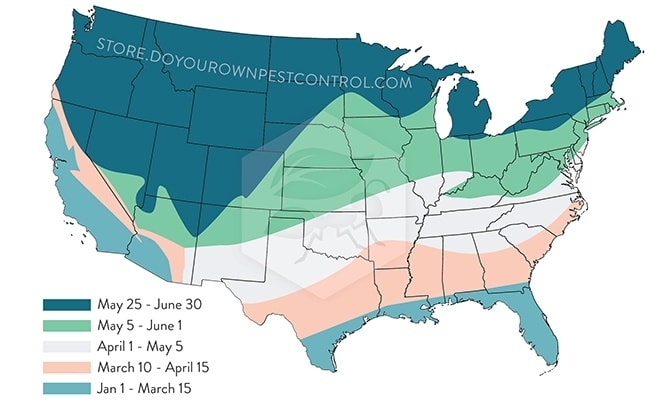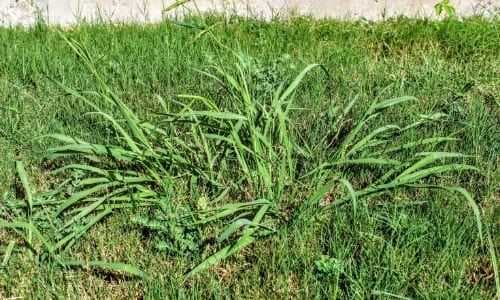It's that time of year again! When should you apply pre-emergent herbicides to your lawn and garden?
Pre-emergent herbicides are a crucial part of yearly weed prevention. They work by preventing weeds from sprouting. There are primarily two points in time each year when you should apply pre-emergent herbicides: spring and fall. In this blog post, we will discuss when to apply pre-emergent herbicides for optimal results. We will also recommend some products that you can use for each season!
What Exactly Are Pre-Emergent Herbicides, And Why Are They Beneficial?
Pre-emergent herbicides are chemical products that control weeds before they sprout. When applied correctly, pre-emergent herbicides will prevent many common types of weeds from appearing. They do this by creating a chemical barrier that controls the sprouting process, thus preventing it from growing once it would be their expected time to emerge. However, it's important to note that while pre-emergents prevent weeds from sprouting, they don't prevent the seeds from germinating. This is why the timing of your application is crucial to rid your property of weeds before they start growing! Some herbicides work as both pre and post-emergents, as they contain chemical ingredients that prevent both stages of the plants. These include products such as herbicides from Dithiopyr.
How Spring Pre-emergent Herbicides Work
This is perhaps one of the most crucial weed prevention times of the year, as it deals with the summer weeds that are just waiting to spring up. Summer weeds vary significantly in type, and they can range from broadleaf to grassy types. The popular rule is to apply once the soil temperature hits 55 degrees Fahrenheit (F), but this doesn't necessarily mean you should wait until then. You can get away with spreading spring pre-emergent at anything above 36 degrees. You'll want to ensure the temperature range will remain in this zone for at least three days before you apply herbicide. Most of the United States will experience this range in temperatures between March and April, so this is an excellent time to think about applying your pre-emergent.

When speaking about spring pre-emergent herbicides, we're generally referring to the two primary manners of applying herbicide: liquid formulations or granules. With granular pre-emergent, the chemical must be watered thoroughly into the soil. This is because it will be most effective if it penetrates the soil. Once the herbicide comes in contact with water, it is freed from the granule and becomes effective. With liquid pre-emergent, the case is very similar. Plants and grass blades may trap the active ingredients, limiting their effect on the targeted soil.
Spring Pre-emergent Product Recommendations
The springtime sees many annoying weeds such as Crabgrass, Sandbur, Foxtail, Clover, Ragweed, and more. Unfortunately, all these varieties have one thing in common - they're grassy weeds that are tough to get rid of once they take a firm hold!

We've rounded up a few of our favorite and most effective spring pre-emergent products below!
Application Of Fall Pre-emergent Herbicide
While many of us tend to think of weeds coming out in the spring, it's also vital to remember that applying pre-emergent in the fall is essential. The reason why? Fall pre-emergent herbicides are specifically formulated to stop annual weeds like Prickly Lettuce from invading your lawn. One of the main fall weed culprits is Annual Bluegrass, and it can be a challenge to get rid of as it is quite hardy. It may require several pre-emergent applications across multiple seasons.

Typically, you'll want to apply these pre-emergents in late summer or early fall when the temperatures are still relatively warm. Suppose you can find a time where the temperature stays in the mid-seventies for five consecutive days. In that case, this is the perfect time to apply your herbicides. Fall weeds begin to germinate when soil temperatures start to dip below 70 degrees. Ideally, the best time to apply is when the daytime highs drop to the mid-seventies for about three to five days in a row. It's crucial to remember that fall pre-emergents won't last through until the spring, so spring pre-emergents must also be applied.
Fall Pre-emergent Product Recommendations
Some of the most common and stubborn annual winter weeds include Prickly Lettuce, Henbit, Deadnettle, and Common Chickweed. We've listed our recommendations for fall pre-emergent herbicides below.
Do-It-Yourself Pest Control Can Guide You In The Right Direction
If you're feeling overwhelmed and don't know when to apply pre-emergent herbicides, Do-It-Yourself Pest Control can guide you in the right direction by simply giving us a call. We will be more than happy to recommend products and application methods specific to your needs! Regarding weed prevention, pre-emergent herbicides are one of the essential tools in your arsenal. Make sure to use them at the right time of year for optimal results! Check out our full selection of pre-emergents here!









